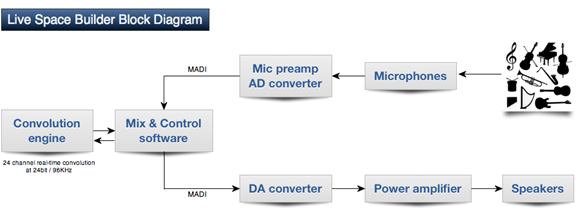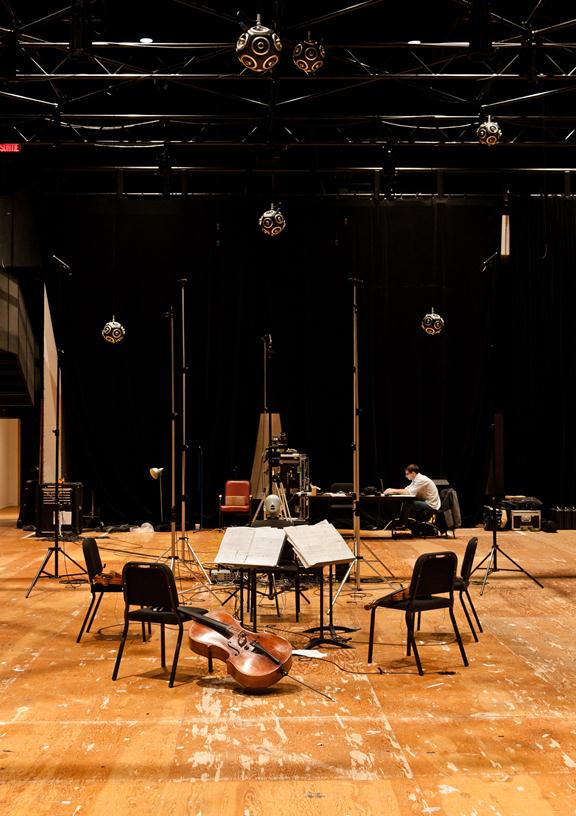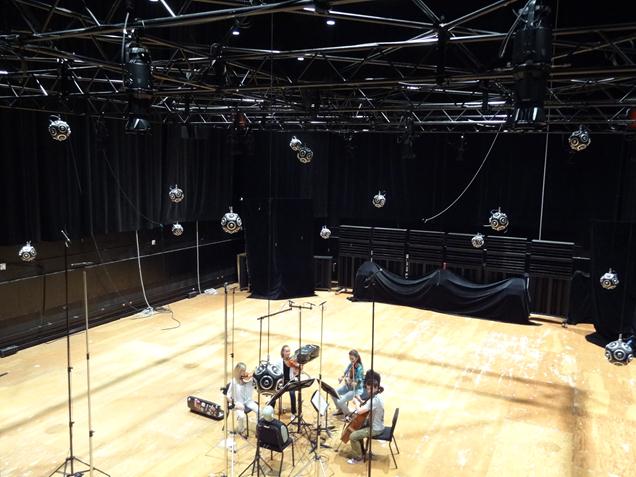
Wieslaw Woszczyk - wieslaw@music.mcgill.ca
Doyuen Ko - doyuen.ko@mail.mcgill.ca
Jonathan Hong - jonathan.hong2@mail.mcgill.ca
McGill University,
Schulich School of Music,
555 Sherbrooke Street West,
Montreal, QC, H3A 1E3,Canada
Popular version of paper 3aAA2
Presented Wednesday, November 2, 2011
162nd ASA Meeting, San Diego, Calif.
The necessity of variable acoustics in modern performance spaces is widely acknowledged; particularly, there has been a growing interest in active acoustics enhancement systems. Many different systems have been developed and installed in concert halls, public venues and research facilities worldwide. However, further improvements are required to provide musicians with a desirable acoustic on-stage support equal in quality to the best rooms. An innovative electro-acoustic enhancement system, based on measured high-resolution impulse responses, is developed at the Virtual Acoustics Technology (VAT) lab of McGill University. The first model is installed in Multi-Media Room (MMR), a large rectangular space (80ft x 60ft x 50ft) designed as a film scoring stage. The system uses an array of omni-directional radiators and its signal processing includes 24-channel low-latency convolution at 24bit/96KHz, three separate stages of matrix mixing, equalization and time variation. Musicians receive acoustics support from room models stored in the diverse library of measured architectural spaces. They can adjust the virtual room enclosure by reaching for an iPad controller, make changes that suit their musical program and style of interpretation. They can blend in desired components of room response in order to improve own interaction with the room and other players. The system of 192 loudspeakers is clustered into low diffraction spheres rendering a homogeneous ambient sound. A lift-equipped grid allows to bring all loudspeakers down or up to accommodate each type of ensemble, and enhance the auditory presence of virtual acoustics.
The objective measurement of the system adjusted to improve on-stage acoustics verifies the enhancement of parameters such as inter-aural cross correlation coefficient (IACC), early stage support (ST1), and early decay time (EDT) without excessively increasing the overall acoustic energy in the room. These parameters are responsible for controling subjective aspects of clarity, reverberance and immersion. The subjective evaluations collected from multiple recording sessions with professional musicians using the system show that musicians uniformly agree on the best settings providing the enhanced acoustic conditions for a particular performance. Choral ensemble and string quartets are able to “play the room”, and they find virtual acoustics to be a helpful and enjoyable means for enhancing their musical performance.
Popular version of paper 3aAA2 (Session: Variable Acoustics on Concert Stages)
Presented Wednesday morning, 8:25-8:45AM, November 2, 2011
162nd ASA Meeting , San Diego, California.

Figure 1. Block Diagram of Virtual Acoustic Technology (VAT)

Figure 2. Choral rehearsal in virtual acoustics

Figure 3. Set up for recording of a string quartet in virtual acoustics

Figure 4. Recording of a string quartet in virtual acoustics